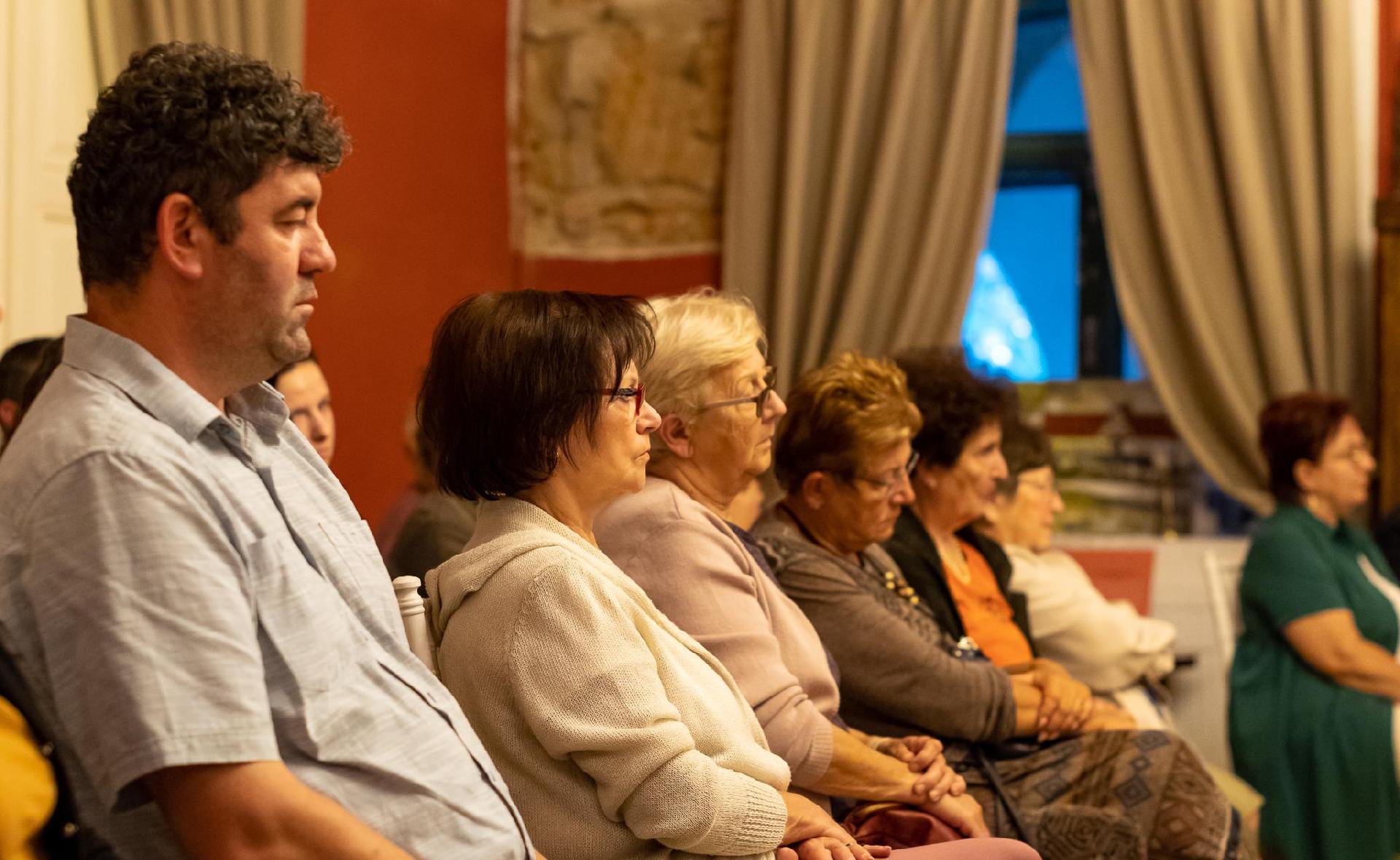
Commemorating Ferenc II Rákóczi in Zabola
Organized by the Liszt Institute Sepsiszentgyörgy, the historical essay collection Rodostó – The Pilgrimage City of the Rákóczi Cult was presented, along with the opening of the architectural history exhibition A Window Opening to Rodostó on July 31, 2025, at the Mikes Mansion in Zabola. The high-profile event was opened with remarks by Dr. Hajnal Both, Consul of the Consulate General of Csíkszereda, and the discussion was moderated by Zsuzsanna Szebeni, Director of the Liszt Institute Sepsiszentgyörgy. The exhibition remains open to visitors until August 20.
On July 31, 2025, the book Rodostó – The Pilgrimage City of the Rákóczi Cult was presented in the event hall of the Mikes Mansion. The volume was introduced by its editors and authors—editor Gábor Fodor, historian and head of the Turkology research group, along with the book’s authors: historian György Csorba (Office of the National Assembly, Department of Public Collections and Public Culture), historian Csaba Katona (Hungarian National Archives), and Dr. Ferenc Tóth, scientific advisor (Institute of History, Budapest)—all prominent figures in the field. They not only presented the book but also offered insights into the creation of the exhibition. The event was hosted by Gergely Roy Chowdhury.
The cult and cultural history essay collection focuses on the Turkish exile of the fugitive prince Ferenc II Rákóczi and his companions, as well as the cult that developed around Rodostó and the history of later pilgrimages. In addition to the Hungarian-related memorials found in the town on the shores of the Marble Sea, the volume also traces the legacy of Rákóczi’s personal cult and his earthly remains. Edited by Gábor Fodor, the collection contains eight studies that explore various aspects of the exile and cult in brief. Following the introduction, Ferenc Tóth provides a detailed account of the history of the exile. In light of the sources, he presents the last years of the prince’s life, the diplomatic opportunities of the exile, the life of the Rodostó community—which also functioned as an intellectual center—and the further history of the community until the end of the 19th century. “Rodostó: here everything is filled with Hungarian sorrow—the air, the sky, the sea, and the land. And this captivates the Hungarian pilgrim as well,” wrote a Hungarian lawyer in 1934, reflecting on his visit to Rodostó. For nearly 150 years by that time, this small settlement on the shores of the Marble Sea had welcomed Hungarian pilgrims and scholars seeking the intellectual and physical heritage of the Hungarians of the Rákóczi emigration. But who exactly researched there over the past centuries, and what did they study? What has been lost, and what has been saved? How did Rodostó become a kind of Hungarian pilgrimage city, a destination for Hungarian prime ministers and high-ranking public officials? The volume seeks answers to these questions while focusing on Rodostó—today’s Tekirdağ—and aims to provide fresh perspectives and the latest research findings on the daily life of the Rákóczi emigration, its architectural heritage and research history, the birth of the Rákóczi cult, the pilgrimages to Constantinople and Rodostó, and the events surrounding the repatriation of the fugitives’ remains. The 2024 Hungarian-Turkish Cultural Year provided an excellent opportunity for the creation of the volume, making the figure of Ferenc II Rákóczi and the place of his exile—just as it has on many occasions over the past century—a connecting link between Hungarians and Turks once again.
Alongside the book presentation, the architectural history exhibition A Window Opening to Rodostó was opened. Following its presentations in Rodostó and Budapest, the exhibition is now on display with the collaboration of the Hungarian Museum of Architecture and Monument Protection Documentation Center and the Hungarian National Museum. Using original plans, blueprints, photographs, and artifacts, the exhibition showcases the research history of Ferenc II Rákóczi’s former dining house, its purchase by the Hungarian state, and its transformation into a museum. Therefore, the exhibition opens a window to Rodostó in both space and time, the Hungarian pilgrimage city. The traveling exhibition was curated by Gábor Fodor and Máté Gergő Kovács. Organized by the Liszt Institute Istanbul, with financial and professional support from the Hungarian Academy of Arts and the Hungarian Museum of Architecture and Monument Protection Documentation Center, and with the professional involvement of the Department of Architectural History and Monument Preservation at the Faculty of Architecture, Budapest University of Technology and Economics, the exhibition presents the 19th-century research of Ferenc II Rákóczi’s dining house in Rodostó, as well as its purchase and restoration by the Hungarian state during the 20th century. The exhibition is open until August 20.
